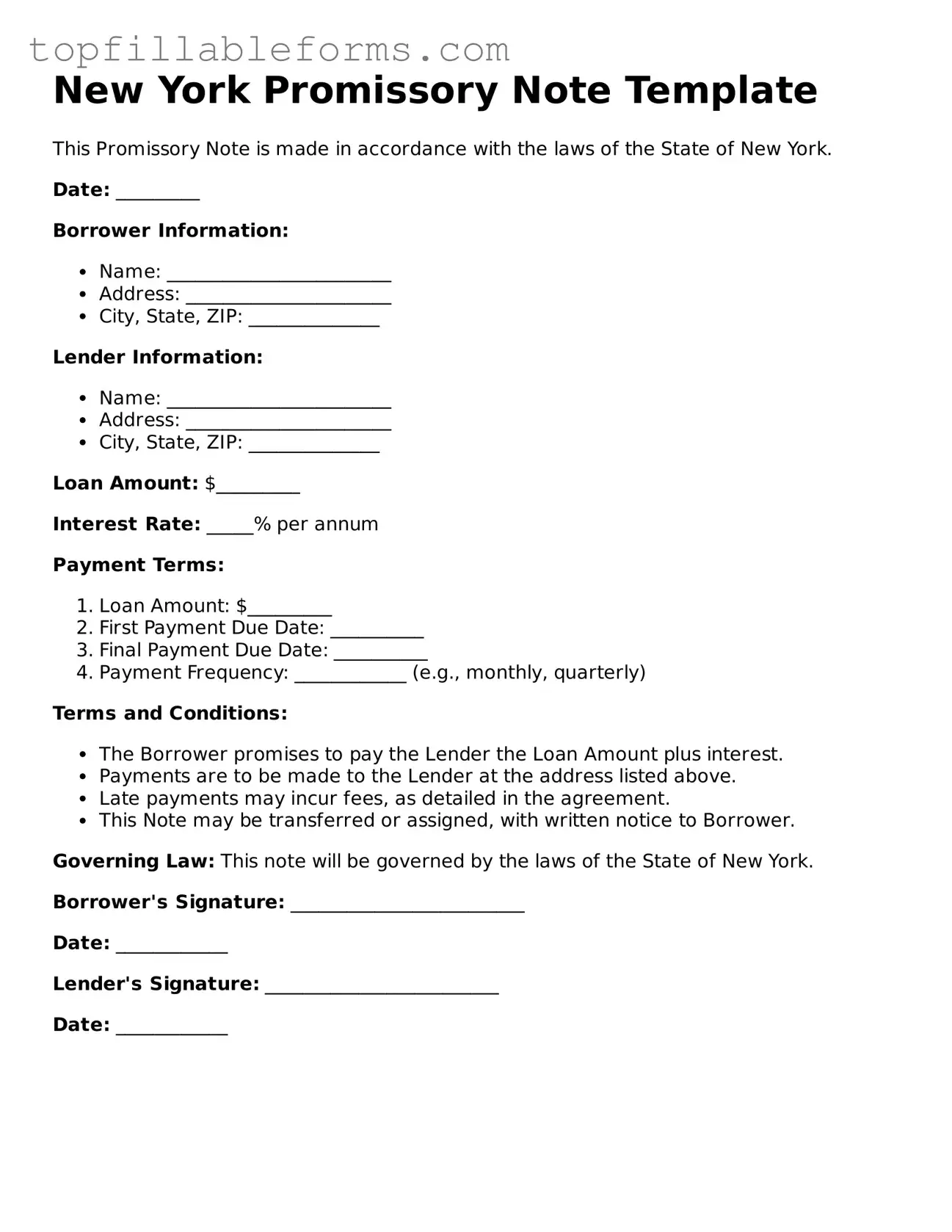New York Promissory Note Template
This Promissory Note is made in accordance with the laws of the State of New York.
Date: _________
Borrower Information:
- Name: ________________________
- Address: ______________________
- City, State, ZIP: ______________
Lender Information:
- Name: ________________________
- Address: ______________________
- City, State, ZIP: ______________
Loan Amount: $_________
Interest Rate: _____% per annum
Payment Terms:
- Loan Amount: $_________
- First Payment Due Date: __________
- Final Payment Due Date: __________
- Payment Frequency: ____________ (e.g., monthly, quarterly)
Terms and Conditions:
- The Borrower promises to pay the Lender the Loan Amount plus interest.
- Payments are to be made to the Lender at the address listed above.
- Late payments may incur fees, as detailed in the agreement.
- This Note may be transferred or assigned, with written notice to Borrower.
Governing Law: This note will be governed by the laws of the State of New York.
Borrower's Signature: _________________________
Date: ____________
Lender's Signature: _________________________
Date: ____________
